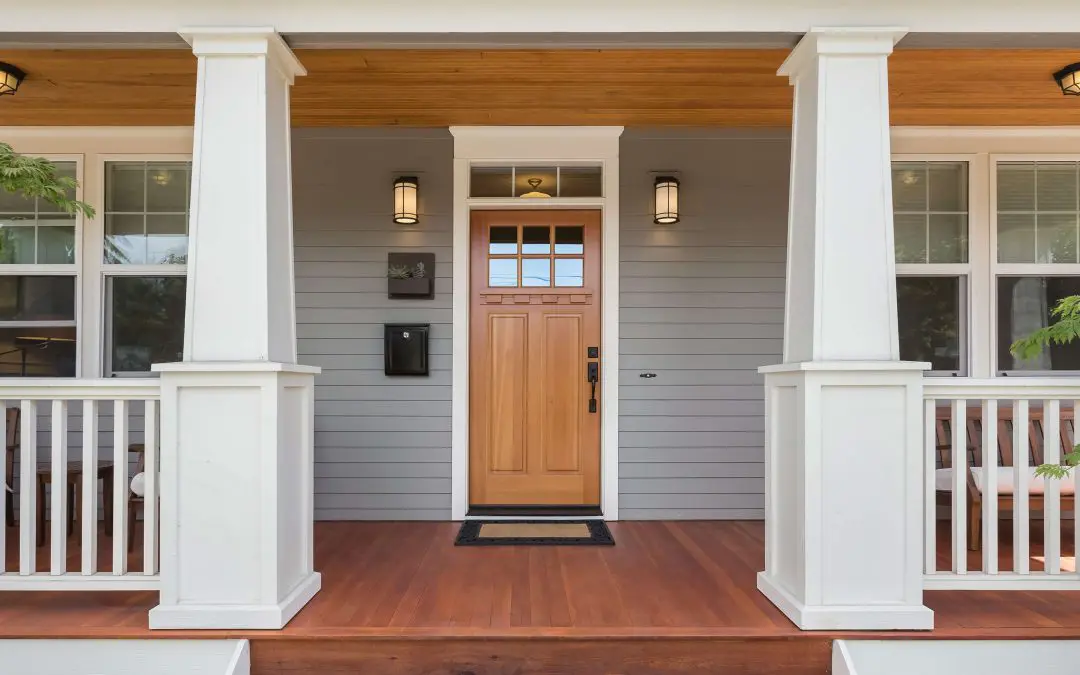Doors provide privacy and security and play a major role in your home’s energy efficiency. While drafty, older doors can let warm or cool air escape, energy-efficient doors help stabilize indoor temperatures, reducing energy costs and improving comfort. Upgrading to energy-efficient doors is a smart investment that will enhance your home’s appearance, cut utility bills, and even boost resale value.
How Energy-Efficient Doors Work
Energy-efficient doors are designed to keep warm air inside during the winter and block out heat in the summer. They do this using a combination of insulated cores, high-quality materials, and weather-resistant seals. Many of these doors are constructed with fiberglass, steel, or insulated wood, providing better thermal performance than older, hollow-core doors. Some models also include double or triple-pane glass inserts filled with insulating gases like argon to further reduce heat transfer.
Another important feature is the weatherstripping. A properly sealed door eliminates drafts, which can account for a lot of energy loss in a home. The tighter the seal, the better the insulation, keeping your heating and cooling system from overworking.
Lower Energy Bills and Increased Comfort
Replacing an old, inefficient door with an energy-efficient model can lead to noticeable savings on utility bills. By reducing the strain on heating and cooling systems, these doors allow homeowners to use less energy while maintaining a comfortable temperature inside. This means no more chilly drafts in the winter or heat creeping in during the summer.
Beyond cost savings, the improved insulation provided by energy-efficient doors also enhances overall comfort. A well-sealed door eliminates hot and cold spots near entryways, creating a more consistent temperature throughout the home. No one enjoys feeling an unexpected chill near the front door in the middle of winter, and energy-efficient doors help eliminate that problem.
Enhanced Durability and Home Security
Energy-efficient doors are built to last. Unlike older wooden doors that can warp or deteriorate over time, modern energy-efficient options use durable materials that resist wear and tear. Fiberglass and steel doors, in particular, offer outstanding longevity with minimal maintenance. They won’t crack, rot, or require frequent repainting, making them a great choice for homeowners looking for a long-term solution.
Security is another major advantage. Energy-efficient doors are often designed with reinforced cores, strong locking mechanisms, and impact-resistant materials. A door that provides better insulation also provides better protection against forced entry, offering homeowners peace of mind as well as energy savings.
Noise Reduction and Aesthetic Appeal
A lesser-known benefit of energy-efficient doors is their ability to reduce outside noise. A well-insulated door acts as a sound barrier, making it ideal for homes near busy streets or noisy neighborhoods. This added soundproofing makes indoor spaces quieter and more relaxing.
These doors also come in various styles, colors, and finishes. Homeowners don’t have to sacrifice aesthetics for functionality. Whether you prefer a modern design, a classic wood finish, or a bold, eye-catching color, there’s an energy-efficient door that suits every style. Some even feature decorative glass panels that provide natural light without compromising insulation.
The Environmental Benefits of Energy-Efficient Doors
Beyond saving money and enhancing comfort, energy-efficient doors contribute to a more sustainable lifestyle. They help lower a home’s carbon footprint by reducing energy consumption. Less energy use means fewer fossil fuels burned for heating and cooling, translating to fewer greenhouse gas emissions. Choosing an energy-efficient door is an easy way for homeowners to positively impact the environment while improving their living space.
An energy-efficient door is a simple yet effective way to improve a home’s insulation, lower energy bills, and enhance overall comfort. With so many styles and materials to choose from, there’s an option that suits every homeowner’s needs and aesthetic preferences.
FAQs
How much can an energy-efficient door actually save on energy bills?
Savings vary depending on the climate and the condition of the previous door. After upgrading to an energy-efficient door, homeowners can typically expect to save 10% to 20% on heating and cooling costs.
What features should be looked for in an energy-efficient door?
Key features to consider are an insulated core, high-quality weatherstripping, and low-emissivity (Low-E) glass. Look for doors with an ENERGY STAR certification to guarantee optimal performance.
Are energy-efficient doors worth the investment?
Absolutely. They help lower energy bills and improve comfort, security, and curb appeal. Over time, the energy savings can offset the initial cost, making them a smart long-term investment.
Do energy-efficient doors require special maintenance?
Most require minimal upkeep. Fiberglass and steel models are particularly low-maintenance, only needing occasional cleaning and inspections of weatherstripping to maintain their performance.
Can energy-efficient doors be installed in older homes?
Yes! Upgrading to an energy-efficient door is a great way to enhance the energy performance of an older home. Proper installation is key to maximizing efficiency, so professional installation is often recommended.
Blackbird Home Inspections provides professional inspections to homebuyers and sellers in Central Arkansas. Contact us to schedule our services.

